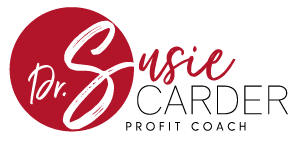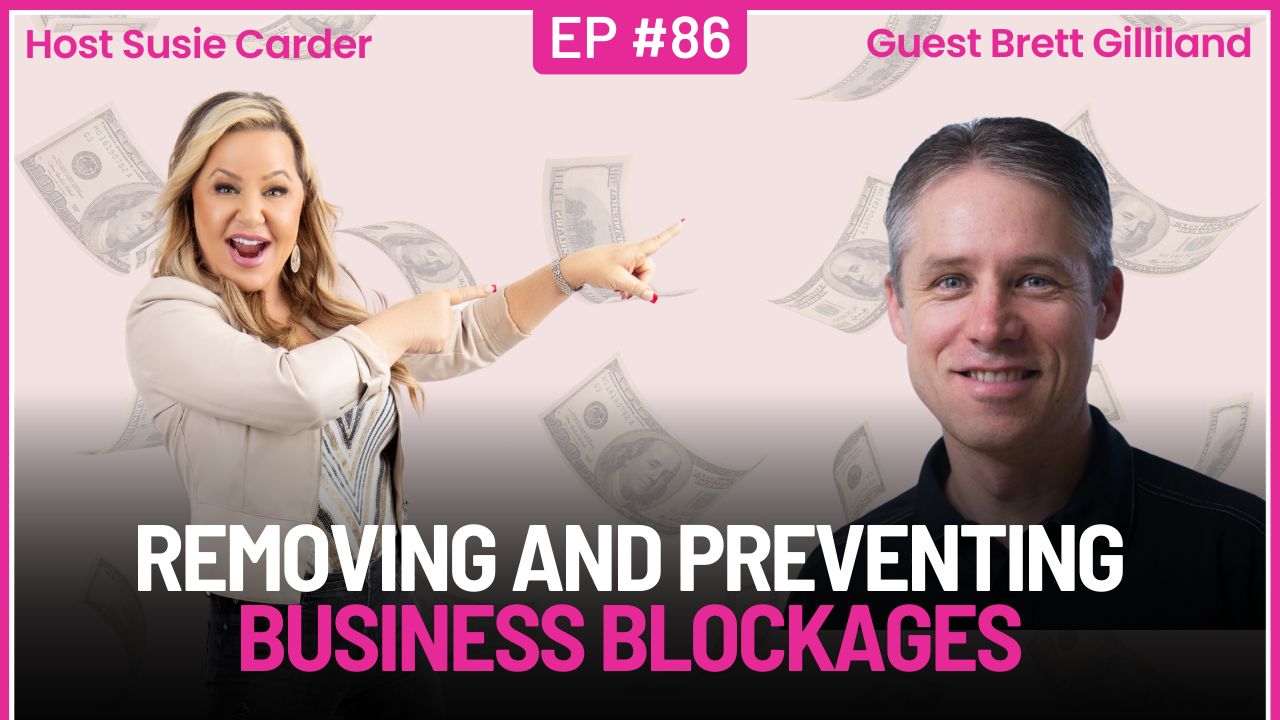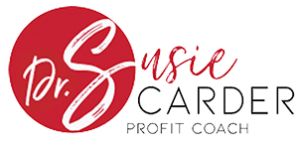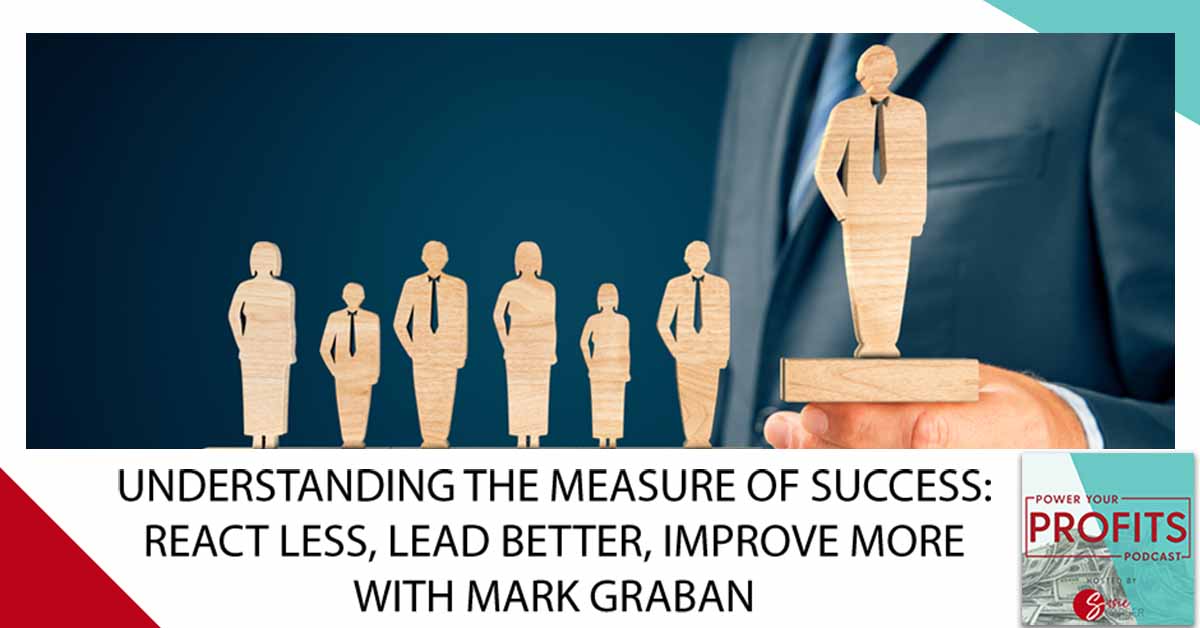
There is no one size fits all measure for success. Each business and each individual need different metrics depending on their goals. Here to discuss all about that today is Mark Graban. Mark is a management consultant, coach, professional speaker, author, senior advisor with KaiNexus and Value Capture, and host of multiple successful podcasts. In this episode, he joins Susie Carder to share insights from his latest book, Measure of Success: React Less, Lead Better, Improve More. He underscores the importance of cultivating a culture that doesn’t shame failure and determining the right metrics to measure success for your business.
—
Watch the episode here
Listen to the podcast here
Understanding The Measure Of Success: React Less, Lead Better, Improve More With Mark Graban
Mark Graban is an author, speaker, podcaster and consultant. His book is Measures of Success: React Less, Lead Better, Improve More. He has been in podcasting for years and his new series is called My Favorite Mistake. He has two Master’s degrees from MIT Engineering and MBA.
—
Welcome to the show. I’m so excited, Mark. Thank you for joining us. I always ask my guests this. I did your official bio but I want to hear your badass list. I want to hear why we should listen and put our attention on you. Chat on. Give me the scoop. It’s hard to brag about ourselves but this is the fun part for me so share those. What is my brother’s badass list?
It’s that list of credentials or accomplishments. I went to undergraduate at Northwestern University. I don’t think I would get admitted there at the school. It has been years since I stepped on campus as a freshman. It has gotten so much more competitive. I am fortunate that I had the chance to go there. I had a great opportunity to attend grad school at MIT where I earned two degrees, a Master’s in Mechanical Engineering and an MBA. I have two US patents from my time working at Dell Computers. That’s cool.
I have written and published 4 books, 2 of which are award-winners from an organization called The Shingo Institute, which is important in my professional circles. I have been involved in two different startup companies. That might be one of the topics. One of them is a software company called KaiNexus. I wasn’t a cofounder but I was the third person involved working with the two cofounders who are awesome. That has grown to a multimillion-dollar business.
Who do you serve? What’s your niche? What’s your secret sauce?
The specialty or niche that I would define a lot of the work I do is a methodology that comes out of Toyota. I started in the automotive industry. People might refer to it as the Toyota Production System or more broadly, lean manufacturing. After about ten years focused in the manufacturing realm, my career took this weird detour where I had this opportunity to start doing similar consulting work in healthcare applying the same lean methodology to healthcare.
I have served hospital systems and healthcare organizations. I haven’t been able to travel so my world has changed a little bit. I try to support organizations virtually and do a lot of work with that software company, KaiNexus, part-time. I’m also affiliated with a consulting firm called Value Capture, which does healthcare improvement work.
Everybody’s business has pivoted because of the pandemic and COVID. What has been your strategy to stay in action and grow?
Learning from small mistakes help prevent huge mistakes.
I’m staying busy and active. Quite honestly, my revenue has taken a hit a little bit downward, which is not great but I managed to pivot enough where I’m doing fine. There are a lot of people who are hurting. I’m thankfully not hurting. There has been a pivot to try to do some work virtually whether that’s coaching clients or virtual speaking engagements. I’ve got my first in-person session lined up for December 2021. Hopefully, that remains an in-person session because I’m ready to do that. I can be safe doing that.
Some of it has been pivoting of what I normally do into a virtual space. A lot of people have used the pandemic to write a book. I wasn’t yet in the new book mode so I have taken a deeper dive into podcasting. One of those is through the organization Value Capture. It’s a podcast called Habitual Excellence. Instead of podcasting as a hobby, I can get paid to do that podcast. I started a new podcast series purely for fun and professional networking that you were a guest on, Susie. It’s a podcast called My Favorite Mistake. That has been a lot of fun.
The other pivot is combining my writing experience and some marketing work. I wouldn’t call myself a professional marketer but between podcasting and websites skills. I have been in a role for the firm Value Capture we’re calling Director of Strategic Marketing. I have led a website overhaul. We’re adopting a new marketing system with a company called HubSpot. We’re using their software and their inbound marketing or content marketing methodology. I do a lot of different things and that’s fun.
What would you say about running two podcasts and focusing your time on this? A lot of people have podcasts. You have been doing it for years. You’ve got a secret sauce around that. For a lot of our readers, this would be a GC conversation. What would you say your learning lessons have been on what you did wrong and right? It’s like My Favorite Mistake in this whole realm of sharing a podcast. A lot of people have them but they’re not getting traction or readers. What’s your secret sauce around that?
The first podcast I started back in 2006 was an extension of my blog, LeanBlog.org. The podcast has a clunky name. It’s Lean Blog Interviews. It’s not what I would name it if I started it now but that one has built up the biggest audience. It was partly an advantage of being an early mover with podcasts in my niche and some of it is a function of sticking with it. You gain subscribers and followers over time. The podcasts that I have started in the last couple of years followed a similar track where sometimes you have to be patient and stick with it. Maybe we can talk about this more.
I have tried to do some creative things to help promote the podcast by being a guest on other people’s podcasts. I do use a PR firm that specializes in booking radio interviews. I’m trying to tap into an audience like that. Back to the part of your question about mistakes, I make mistakes all the time. I don’t know if these are favorites but the biggest mistake I made podcast-wise was forgetting to hit record. I did a 30-minute episode. I’m the type of person where I wasn’t going to blame some mysterious technical glitch. I fessed up to the guest saying, “I screwed up. I’m sorry.”
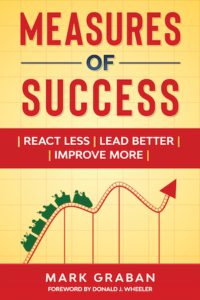
They were very gracious about it. I should remember who it was because they were incredibly gracious about it. They said, “Let’s call that a practice session. Let’s do it again.” That was great of them. One time, I do remember this was the author Eric Ries. He’s the author of the book The Lean Startup. We did a podcast and recorded it. This is back in the days when I was on a Windows laptop. The night after I recorded it, I had a hard drive crash. It was not my fault. It lost the episode. Eric was kind enough to say, “We will rerecord it.” My lesson learned. The thing that I’m not going to fall back into again is to always have backups.
I’m on Mac. I’ve got an online service called Backblaze, which is constantly updating and backing up to the cloud. I use Time Machine and often store files in either iCloud or Dropbox. It’s like belt and suspenders and another belt. I don’t want to lose those files. That was embarrassing. When you admit your mistake and figure out like, “I’m going to avoid,” you can tell someone not just, “I screwed up but here’s what I have learned from it,” people are gracious, generally speaking.
It’s when you fall on the sword versus making up some excuse or story. It happens in business and life. When we try to be that perfectionist or get it right all the time, that’s not realistic. Those are great podcast mistakes. I always call these the cosmic boot life lessons and some people call them failures. What has been the biggest one that you have had in your business? How did you pivot from it? What did you do to come over it? What was the lesson? What did you learn from that?
It’s hard to think of a huge one. I’m quite aware of the mistakes that I make constantly. Maybe one of the lessons is that learning from small mistakes helps prevent huge mistakes. When you were on My Favorite Mistake, Susie, you were very forthcoming about your real estate investing mistakes. I appreciate that you were willing to share that as other people have on the show. I’m not trying to be evasive but there’s this point of making small mistakes and learning from them.
One thing that I use is I try to follow a good process, being organized, structured and having different checklists that I follow or planning episodes, tracking with the guests, going through the things I need to do to release the episode. I’m using a checklist. I wouldn’t say that helps me be perfect but it helps me avoid repeating the same mistakes over and over again. Thankfully, I haven’t had a business crater. It has been a speed bump given the way things go. Even the thing with the software company, KaiNexus is any startup that has ups and downs.
The culture that Greg and Matt, the Cofounders, have built and I’ve tried to help them with is a culture of learning from mistakes. Don’t create an environment where people hide or cover up mistakes. If it’s a simple human error or a mistake that has never been made and you couldn’t anticipate it, it’s not a culture that blames people or jumps down their throats. That’s the key to having a good, healthy and resilient culture in business. I’m usually harder on myself than anybody else is on me so I have to be careful about that.
Don’t create an environment where people hide or cover up mistakes.
That’s a great leadership example. There are challenges in the business. What have we learned from it? You always talk about how leaders need to react less, leave better and improve more. Share more about that. What’s important inside of that context that you want to share?
This is the book that I wrote and self-published. I had done previous books through a traditional publisher. The subtitle of Measures of Success is React Less, Lead Better, Improve More. There’s rollercoaster imagery on the cover. There are going to be ups and downs but the lesson is to get off the proverbial emotional roller coaster where leaders are reacting or overreacting to every up and down in some business metric.
A lot of time, that ends up being wasted time. That’s a distraction from improving the business. The subtitle doesn’t say, “Never react.” There’s a methodology that I was fortunate to learn. I have used it in my career and I’m passing it along in the book. It’s a methodology called Process Behavior Chart. It allows you to not just chart your business metric but also to calculate some guardrails around that metric to help you understand, “Is that most recent data point noise in the metric? Is it an outlier or signal?”
Here’s an example of that chart. A serious issue from hospital surgical deaths. Those numbers are fluctuating around an average and within those calculated red lines. I would tell the leader, “Don’t ask why last month was worse than the month before in that case.” When we replaced the explanation of last month’s data point, we can instead step back and say, “Why is the average death rate this? How do we improve systems that would reduce postoperative deaths?” That’s a different thought process than, “Explain the last data point.”
What can we improve upon it? We always look at, “What do we love? What are three things we like? What’s one thing we can improve upon?” There were always whether it’s training, sales call, last year or this year, this quarter or last quarter, this month in our plan reviews, this month or last month. It’s simple and clean. I find that people know the areas that they need to improve upon. When I start saying, “You need to improve upon this,” I am met with resistance.
Allowing them to share, “Here’s what I can improve upon. It’s not what I did wrong.” We’re not putting blame. It’s what can we improve upon to make that happen? What are some other data points when you look at your book that we should be measuring that we don’t know we should be measuring? For the obvious ones, you’re looking at growth, clients and profitability. We should be looking at profitability. I’m saying that out loud. What do you think?

When I think of my own business, when I go and teach workshops about this methodology, I have a survey form at the end of the day. There are both numerical scores and freeform feedback. You can’t rely on numerical scores alone. You want to invite constructive criticism or hear in people’s own words on what went well. I have done ten workshops over some time. I will look at the score for each workshop. Let’s say the previous workshop, the average score was 4.8 out of 5. I do this next workshop pretty much the same way. I try to improve the workshop based on feedback from before but I figured the workshop is good. It doesn’t need overhauling. People were generally happy.
The next time, the average score is 4.65 fonts. That doesn’t mean the workshop is terrible. That difference between 4.8 and 4.65 when I plot the last ten workshops, I said, “The average score is 4.72.” Sometimes you’re going to be better than average sometimes below average. If I calculated those red lines, guardrails and limits, let’s say the lower limit was 4.2. If I did a workshop where I flew in the night before, my flight was delayed, I was tired, I wasn’t on top of my game and the average score that day was 4.1.
It could be like, “I wasn’t on my game that day.” The lesson learned is don’t take the last flight of the day or if it gets delayed, I land at 2:00 AM. That could be the cause and effect between what happened and why I got the low score. As a final point that I’ll make, I did a workshop in the Netherlands. There was a survey and the average score was a lot lower. One of the hosts had said, “Dutch satisfaction scores are always lower than they would be in the United States.” The Dutch are direct and blunt. That’s great as long as you’re prepared for it. Getting a low score from a Dutch audience, don’t overreact to that. It could be that the context is they’re tough graders like a professor might be.
We did the same thing at the beginning of my career. We would go to the people that didn’t like me, “What did I do wrong?” We have 99% of everybody that loves you. Let’s put it in context. It could be that person. It could be like, “Woe is me. My life is over. They don’t like me.” You can’t please everybody.
Whether it’s feedback about a book, workshop or something sometimes you need to say, “I’m going to discount what they said.” Maybe it’s the context of somebody’s boss that made them go to a workshop. They didn’t want to be there. They were ticked off and grumbly and take it out on you in the score. You raised a good point, Susie.
Key metrics might be different for different people.
I like to do after a meeting, workshop or something Plus-Delta or Plus-Minus like, “What went well? What could have been better for Delta? What was the gap between what you wanted and what happened?” That’s maybe a polite way of saying Plus-Minus. You often need to make sure you do more of what made people happy and not just fix the problems that people complained about.
We’re talking about data and you graduated from MIT. Most entrepreneurs did not but it’s not data that’s so entrenched. It’s, “Let’s look at data that’s going to serve you in this business.” I used to be a very emotional leader and I wanted to inspire everybody. We started doing data points. It’s like, “Everybody loves that person.” Just because they don’t work the same way you work doesn’t mean we get rid of them. I learned to appreciate people’s differences.
I have learned through data points. That’s my personal preference. It doesn’t necessarily mean what my consumer is thinking. It’s important to look at how do you dissect it and how do you get some data to run your business. It’s not all data points but pull the meat from the book that allows you to make that change in your business. How do we get the book?
It’s available through Amazon both as a paperback book and Kindle. The book’s website is MeasuresOfSuccessBook.com if people want to download the first chapter and there are all kinds of free resources available on the website. Like a lot of authors, I would love it if people buy the book. Better yet is if they read it and put it to use. Like a lot of books, there’s a passion here around this methodology that I have found to be so useful. It’s what we call these Process Behavior Charts. Watch the free webinars that I have done, read the articles and there’s a spreadsheet template. If you can go make use of this methodology without reading the book, that’s good too. I would consider that a happy outcome as well.
Is there one question you wish I would have asked you that you know that entrepreneurs need to know inside their business or even their life when you look at having holistic success?

There are related questions around metrics. One question people always ask is, “What should I measure?” That’s hard for me to say but there are some general tips. Measuring more things isn’t always more helpful. Sometimes you’ve got to have that discussion. One point I tried to make in the book is KPIs. It stands for Key Performance Indicators, not Kajillion Performance Indicators. You can get lost in this flood of data of like, “I got in my ‘executive dashboard’ with 97 metrics on it.” It’s like, “Look at your car’s dashboard. It does not display 97 different things.” The key things are your speed and how much range is left whether it’s a gas tank or an electric vehicle.
There are hundreds of things being measured in real-time being stored in your vehicle’s onboard computer. You as the driver don’t need to be overwhelmed with all of that. Sometimes you do need to take a deeper dive into data but I recommend to business leaders to think about measuring their health. There are hundreds of laboratory tests and measures about your body and its condition. You may have a couple of key numbers. Most people look at the number on the scale. Weight is one measure. That’s not always an indicator of fitness. Let’s say in my family, there’s a history of Type 2 diabetes. Measure around blood sugar is important because I would rather try to prevent diabetes than end up taking insulin every day.
Those key metrics might be different for different people. Back to business, what are the key health measures for our business related to cashflow, customer acquisition and customer satisfaction leading to profitability as a result? I don’t think profit is one number like how the weight on the scale is one number. That’s a key thing. Don’t measure too many things. When we’re measuring too many things and overreacting to every up and down in all of those measures, our heads will be spinning and it ends up being a distraction instead of being something that helps us run the business better.
Go to MeasuresOfSuccessBook.com. Order the book and get the bonuses. We want to get all the bonuses that you have and the free webinars. Go check it out. Let’s look at what gets measured gets done. We know that what gets reported excels. We know that as well. Thank you, Mark, for your genius, for serving us and for your generosity. We appreciate you. If you love this episode, please like and share it with your community or tribe to help us stay more focused on business and power that profit inside of your business so that you have the fuel to keep doing what you want to do. Mark, thank you so much. Have a blessed day. I appreciate you for serving our community.
Thank you, Susie. It’s great to talk to you. Thanks for turning the tables and interviewing me. This has been fun.
Important Links
- Mark Graban
- Measures of Success: React Less, Lead Better, Improve More
- My Favorite Mistake
- The Shingo Institute
- KaiNexus
- Value Capture
- Habitual Excellence
- Susie – Past episode on My Favorite Mistake
- HubSpot
- LeanBlog.org
- Lean Blog Interviews
- Eric Ries
- The Lean Startup
- Backblaze
- Process Behavior Chart
- Amazon – Measure of Success
- https://www.Facebook.com/mark.graban
- http://www.LinkedIn.com/in/mgraban
- https://www.Instagram.com/mgraban/
- http://www.YouTube.com/mgraban
About Mark Graban
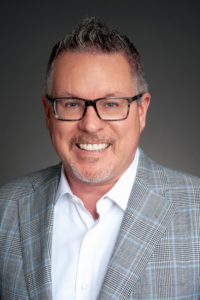 Mark Graban is an author, speaker, podcaster, and consultant. His most recent book is “Measures of Success: React Less, Lead Better, Improve More.” He’s been podcasting for 15 years and his newest series is called “My Favorite Mistake.” He has 2 master’s degrees from MIT (engineering and MBA).
Mark Graban is an author, speaker, podcaster, and consultant. His most recent book is “Measures of Success: React Less, Lead Better, Improve More.” He’s been podcasting for 15 years and his newest series is called “My Favorite Mistake.” He has 2 master’s degrees from MIT (engineering and MBA).
